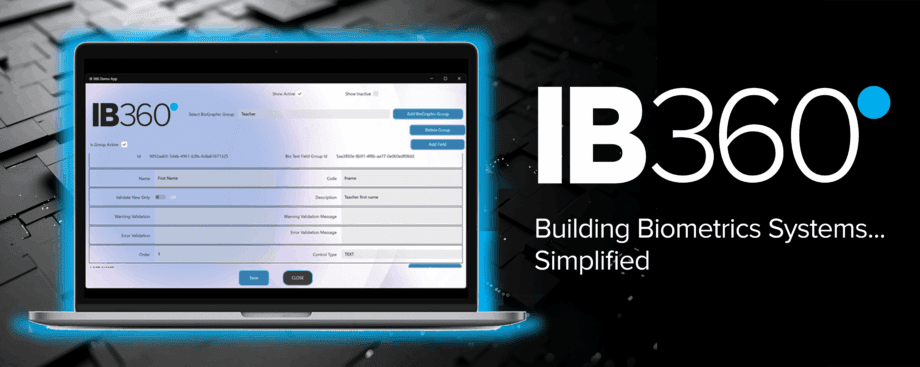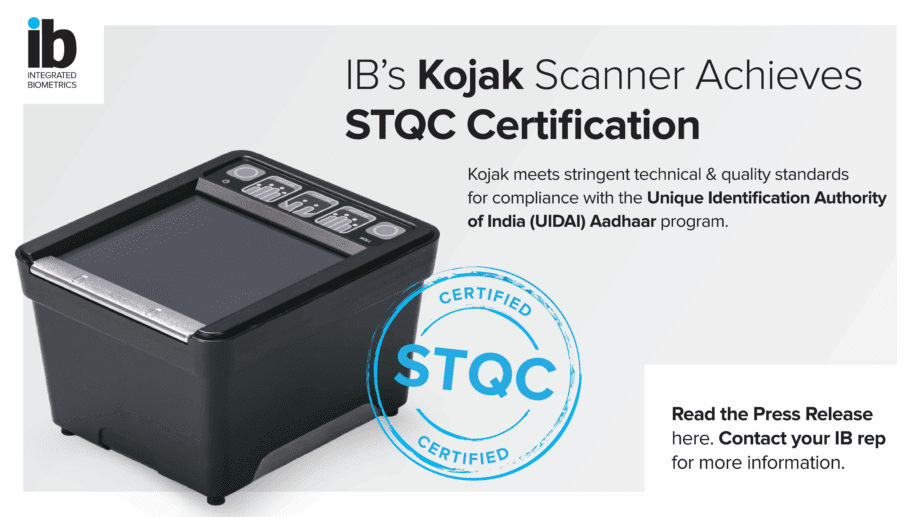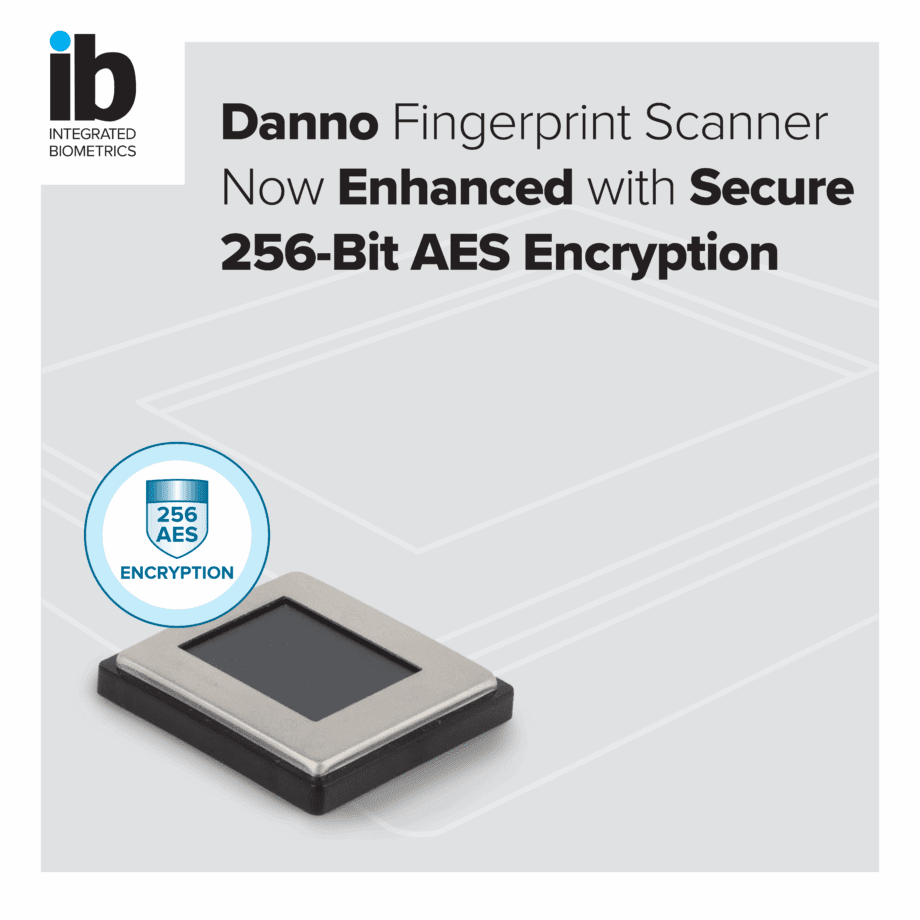Download the Article here.
When disaster strikes and forensic examiners need to identify the deceased, they often use fingerprints to identify the victims. Fingerprints are unique to each individual and do not change after death. Thus, fingerprints are an excellent tool to identify the deceased, missing persons, and living victims of natural disasters.
In disaster victim identification, forensic staff need a reliable way to capture fingerprints from deceased individuals. After capturing the prints, properly trained fingerprint examiners can compare the prints of the deceased against prints of known individuals. If the examiner determines that the deceased person’s print matches the print of a known individual, they have identified the victim.
But there are many challenges in identifying deceased victims.
Several challenges can arise when attempting to identify corpses through fingerprint biometrics or other methods.
- Physical deterioration. Some disasters subject corpses to extreme heat or cold, immersion in water, or exposure to wind, dust, fire, or other natural or man-made elements. These conditions can result in deterioration of the hands, making fingerprints difficult to obtain.
- Other damage. In addition to physical deterioration, fingerprints may be difficult to obtain due to injuries or trauma to the hands or fingers, burning from a disastrous fire, or other causes. These cause difficulty in obtaining fingerprint images for matching with the prints of a known individual.
- Lack of victim information. The very nature of disasters often limits the available information about a victim. While examiners use available information such as a list of airplane passengers, in some cases, no such information is available. Without any leads, an examiner has difficulty knowing which fingerprint databases to consult, which relatives could provide DNA samples, or related information about the victim.
- Technology and equipment availability. The specialized equipment needed to obtain forensic samples from deceased persons may not be readily available, and in the case of rapid DNA equipment, may be prohibitively expensive. Rapid DNA testing is also challenged by commingled remains and other factors that reduce the ability to acquire samples.
Despite these challenges, forensic examiners have successfully identified individuals using Integrated Biometrics’ portable lightweight fingerprint scanners. The following pages describe five organizations that have successfully identified deceased victims.
The Latent Print Unit of the U.S. Federal Bureau of Investigation (FBI) identifies deceased victims even when their fingerprints are badly damaged. Integrated Biometrics’ Watson scanner and other IB scanners allow Latent Print Unit examiners to capture high-quality prints in the field from deceased victims. They are also lightweight, offer a small form factor, and consume minimal power.
A recent Journal of Forensic Sciences article authored by Bryan Johnson, Major Incident Program Manager, details how fingerprints aid in deceased victim identification.
- Las Vegas, NV shooting, October 1, 2017. The Clark County Office of the Coroner/Medical Examiner used fingerprints to positively identify two victims who were previously misidentified based upon the identification cards in one individual’s pocket. This positive identification prevented a serious error from releasing the wrong victim’s remains to the wrong family.
- MV Conception fire in California, September 2, 2019. For drowning victims from Singapore and India, it would have taken weeks to collect and fly DNA samples from their home countries to the United States. Therefore, the local authorities requested the victims’ fingerprints through customs records from DHS. Use of fingerprints sped up identification time.
- Surfside, FL building collapse, June 24, 2021. Because of the trauma from the collapse, combined with fire and flooding, the bodies degraded until rapid DNA technology could no longer produce usable profiles for comparison. Commingled remains also presented challenges. The Miami-Dade Medical Examiner and Police requested assistance from the FBI Latent Print Unit, whose investigators identified 56 of the 98 deceased by their fingerprints.
The FBI is also working closely with the U.S. Border Patrol’s (USBP) Missing Migrant Program. The USBP uses the Homeland Security e3 portal (“e3”) to collect and transmit data related to law enforcement activities to various databases, including the Enforcement Integrated Database (EID), and the Automated Biometric Identification System (IDENT) which is transitioning to the Homeland Advanced Recognition Technology System (HART).
Because of the harsh conditions at the border, USBP agents sometimes encounter deceased individuals who require identification. The e3 suite of applications allows agents to record biographic information, as well as capture and transmit subject photographs and fingerprints to IDENT/HART in real-time.
The mobile and rugged qualities of Integrated Biometrics’ fingerprint scanners, (Kojak, Five-0, and Watson) lend to the efficiency of mobile field identification solutions. USBP agents use these scanners to capture the fingerprints of living and deceased individuals in the field, in the hospital, and in the morgue.
DataWorks Plus provides technology solutions for law enforcement, criminal justice, and government agencies, including the DataWorks Plus Deadscan. This offering allows medical examiners, coroners, and crime scene teams to quickly identify a deceased victim. Deadscan incorporates Integrated Biometrics’ Five-0 scanner, FBI Appendix F certified with a FAP 50 size that allows capture of all ten prints.
In 2022 and 2023, Deadscan and Five-0 identified three deceased victims in Arizona under
challenging conditions.
- Pima County, summer 2022. A team found a deceased victim who had been in the hot desert sun for four days. In these conditions, the skin dries out and turns to leather. Deadscan and Five-0 captured usable fingerprints. The team captured prints without having to rehydrate the fingers, which is sometimes required to capture fingerprints from the deceased.
- Mohave County, summer 2022. In a similar situation, a team found a body that had been exposed to the elements for two weeks. Both state and federal agencies accepted the prints, again without rehydrating the fingers.
- Coconino County, 2023. Arizona contains “slot canyons” that are often no more than 10 feet wide and up to 400 feet deep. When these canyons flood, victims can drown and their bodies can wash miles downstream, suffering trauma that impedes identification (even dental identification). Because of the distance traveled, bodies may remain in the water for 18 hours or longer. Despite these conditions, Deadscan and Five-0 successfully captured fingerprints from drowning victims.
In all instances, the IB Five-0 scanner was able to capture usable fingerprints that challenged less capable scanners.
Verázial Labs, a Spanish biometric solution provider, offers secure identification across a variety of commercial and government sectors for patients, workers, students, and prisoners.
An Ecuadorian customer asked Verázial Labs to develop a biometric identification solution that would accurately ID the deceased. Verázial Labs CEO Emilio Gallego Sotos saw the challenge as an opportunity to solve an identity management problem his competition avoided.
Inviting the collaboration and participation of a local mortuary, Verázial Labs used the Integrated Biometrics Kojak fingerprint scanner to attempt to identify deceased bodies from fingerprints, even under the most challenging conditions.
In one case, the mortuary received the corpse of a young man who was deceased for eighteen hours and who experienced significant trauma when he died. After examining the body, neutral examiners speculated that the examiners might capture only half of the fingerprints, and that the captured prints would be of sub-par quality.
To the surprise of all, except the Verázial team, the ten fingerprints captured using Integrated Biometrics Kojak multi-finger scanner resulted in extremely high prints. With a quality scale ranging from 0-100 the Verázial software returned scores ranked in the 90s with two exceptions scoring a still impressive 85.
For over 25 years, the Disaster Victim Identification (DVI) Squad of the Institut de Recherche Criminelle de la Gendarmerie Nationale, the Forensic Laboratory of the French Gendarmerie, has been involved in many identification cases including natural disasters, aircraft crashes, road traffic accidents, and terrorist attacks.
As a result of the sometimes-extreme conditions in which the squad must operate, the team has adapted their equipment for greater efficiency and accessibility. Its toolkit includes a biometric sensor combined with a portable automated fingerprint identification system (AFIS). The squad chose the Integrated Biometrics Watson scanner as a critical component of its toolkit.
The results, contained within the technical note of the Journal of Forensic Identification, 69 (4), 2019 \ 413 state that “the sensor gives the best quality-to-time ratio, enables quick victim identification, and, consequently, a more rapid return of the bodies to their relatives.” Significant improvements in processing times were observed when comparing digital acquisition to traditional collection methods.
“Processing times are significantly reduced by the implementation of a biometric system for the bodies that are not too degraded. In the other cases (burned, mummified bodies), the Fingerprint DVI Toolkit provides all the necessary equipment to perform traditional techniques, adding to its versatility.”
These are just some of the examples of Integrated Biometrics’ contributions to disaster victim identification.
To obtain the complete report (“The Fingerprint Disaster Victim Identification Toolkit: From Power to Biometrics”) about the victim identification results of the French Gendarmerie, or to ask any questions about disaster victim identification, please contact your Integrated Biometrics representative.
About Integrated Biometrics
Integrated Biometrics (IB) is a global leader in advanced biometric technology. Renowned for revolutionizing fingerprint scanning through its proprietary, FBI-certified Light Emitting Sensor (LES) technology, the company delivers cutting-edge fingerprint scanners, seamless biometric system integration software, contactless fingerprint capture, and comprehensive identity management beginning with infant identification solutions.
Trusted by organizations worldwide, Integrated Biometrics serves critical sectors such as law enforcement, military, election validation, financial services, and national identity programs. Its robust, high-performance products enable fast and accurate enrollment, identification, and verification, even in remote and extreme environments. IB continues to redefine the possibilities of biometrics—Impacting Lives Through Identity.




